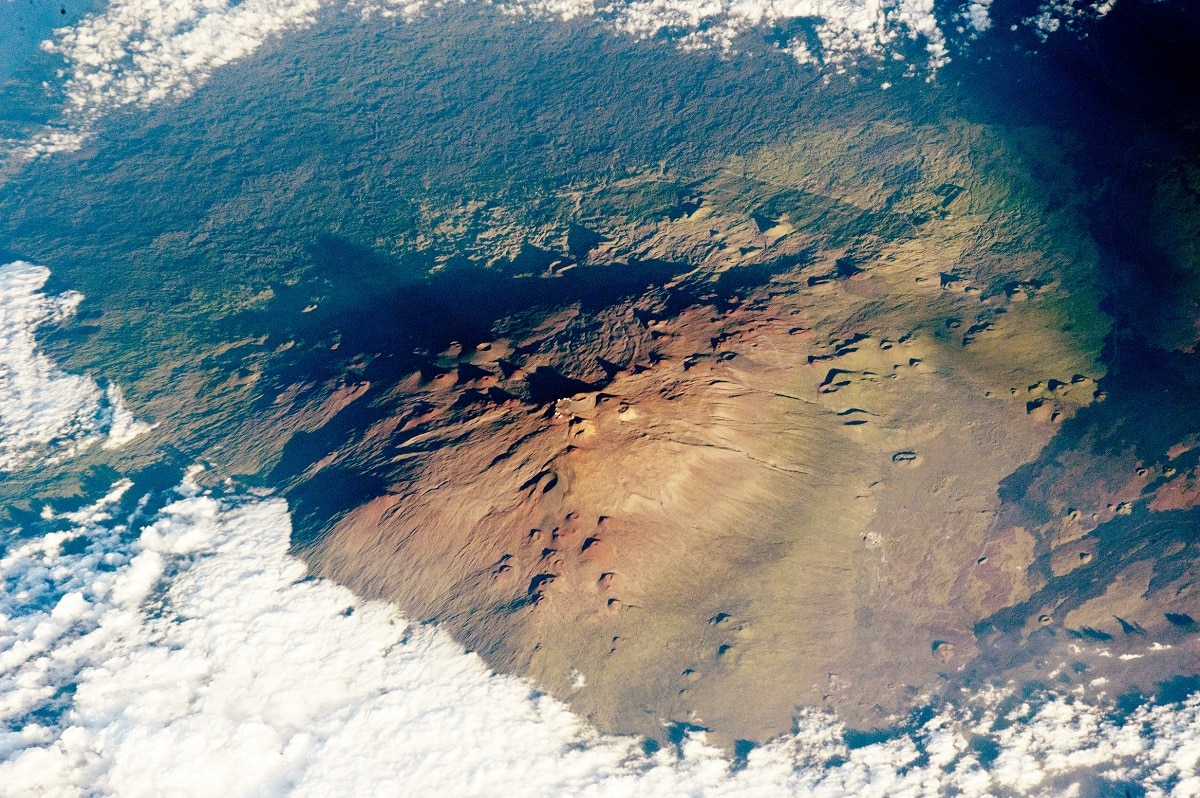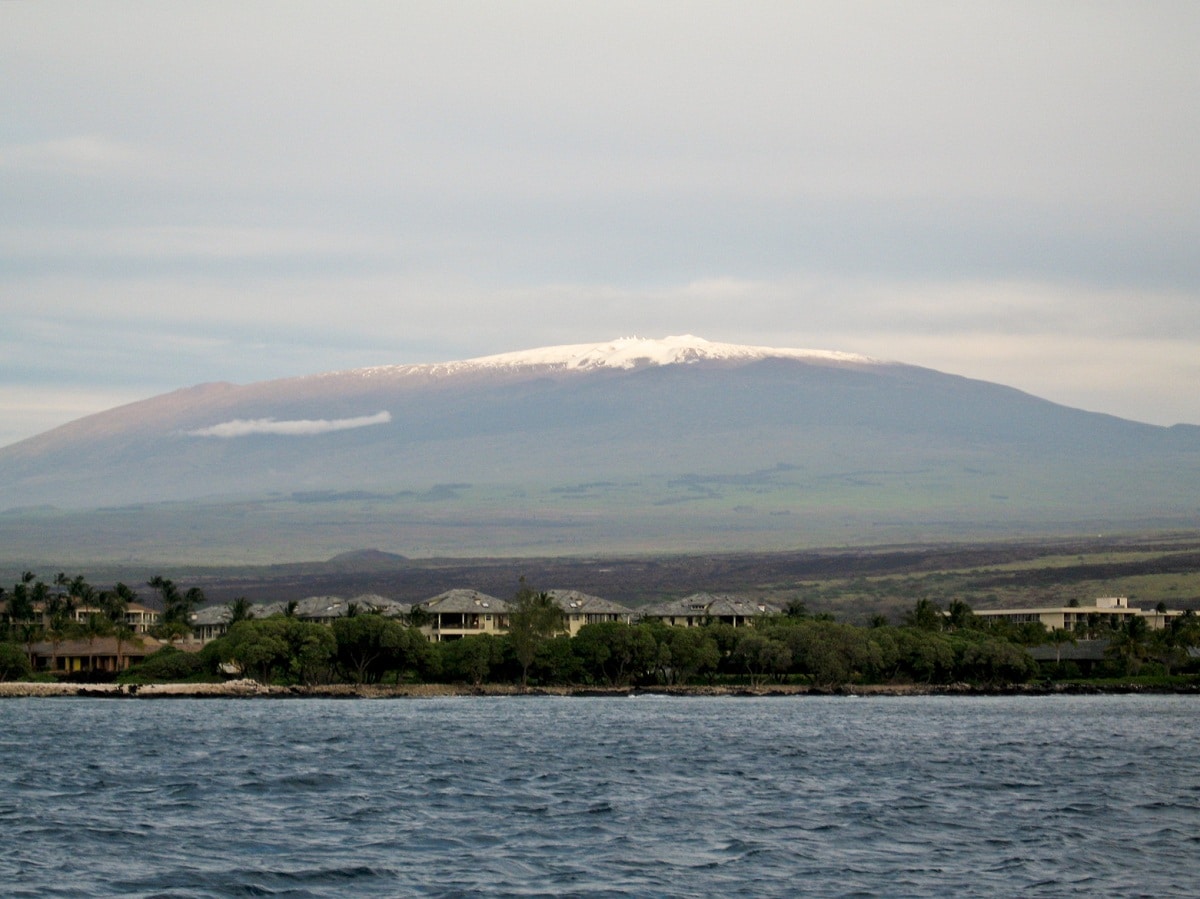
We know that on our planet there are numerous types of volcanoes with unique characteristics and that more than one may surprise us. One of them is the Mauna Kea. It is the highest peak in the state of Hawaii and is a volcano that, if taken from its base as a starting point, is considered the highest volcano in the world. If we count it from this place, surpassed even Mount Everest.
Therefore, we are going to dedicate this article to tell you all the characteristics, origin and eruptions of the Mauna Kea volcano.
Key features

Mauna Kea's name comes from Hawaiian and means white mountain. It is one of the oldest volcanoes that make up this island. It is the fourth oldest and considered a sacred volcano by the natives of Hawaii. It is a volcano where you can find a great biodiversity and ecosystems composed of native flora and fauna habitats, so it has great cultural and natural importance. It is considered a refuge for a large number of local species and is not only important in Hawaii, but throughout the world.
One of the curiosities for which the Mauna Kea volcano stands out is because it has a higher altitude than Mount Everest. It is considered the highest volcano in the world as long as the height from its base is counted.
It is classified as a dormant volcano. It is located in the north-central part of an island located in the middle of the Pacific Ocean. Most of its mass is still underwater, which is why Mount Everest is often called the highest. From the bottom to the tip of the seabed, it is more than 9.000 meters high, but the exact number is unclear. It is estimated that its height ranges between 9.330 and 9.966 meters, or even more than 10.000 meters. According to the United States Geological Survey, it is 4.205 meters above sea level. Its volume is approximately 3.200 cubic kilometers.
It is a shield-shaped volcano with the top of a mountain covered in snow. Yes, although Hawaii is not a place related to cold, Mauna Kea has an ice sheet and, during the winter months, it records snowfall (hence the name). These characteristics make it a popular destination for the practice of sports such as skiing and snowboarding. Due to its height, landscape, clean air and distance from large cities, telescopes and observatories were installed.
Mauna Kea volcano formation

We are talking about a dormant volcano that can wake up at any moment. And is that almost all inactive volcanoes can wake up at any time and enter a cycle of eruptions again.
Mauna Kea is estimated to be approximately 1 million years old. Being a shield volcano, it is formed almost entirely by the accumulation of several layers of highly fluid lava, pouring in all directions, forming gentle slopes and wide shapes. However, the lava in this case is very viscous and a steep slope is formed. Specifically, it is said to have been in a backup state because it has entered a phase of change, and its eruptive activity has decreased more than 400 years ago. However, like any dormant volcano, it can wake up at any time.
Its origin is a hot spot in Hawaii, an area with high volcanic activity. The Pacific plate slides past this point, where magma of basaltic composition rises, destroys the oceanic crust and appears as lava during the eruption. In this sense, Mauna Kea began as an underwater volcano, until successive layers of erupting lava overlapped and gave it its current shape. Most of its structure was built in the Pleistocene.
Post-shield activities began more than 60,000 years ago; up to 300,000 years, after which it began to shed alkaline basalt.
Mauna Kea eruptions

The last time Mauna Kea erupted was 4.500-4.600 years ago. It was very active in the shield stage around 500.000 years ago, and after reaching the rear shield stage, the activity became quieter until it became a dormant volcano.
There are few confirmed cases of historical eruptions; that is, about six, all of which occurred before the Common Era. About 4.000-6.000 years ago, 7 vents may have erupted and represent some of the more recent eruptions. The latter event undoubtedly produced several cinder cones and vents on the north and south sides at some point in the Holocene.
Geology
Mauna Kea is one of the five hot volcanoes that make up the Big Island of Hawaii and is the largest and youngest island in the Hawaiian Emperor Seamount Chain. At its summit, the Mauna Kea volcano is not a visible caldera, but a series of cones composed of ash and pumice stone. It is conceivable that there is a volcanic crater on top of the mountain, which was covered by sediment from the subsequent volcanic eruption.
The Mauna Kea volcano has a volume of more than 3,200 square kilometers and its mass is so great that, together with the neighboring volcano Mauna Loa, it created a depression in the oceanic crust 6 kilometers deep. The volcano continues to slide and compress beneath it at a rate of less than 0,2 mm per year.
Mauna Kea is the only volcano in Hawaii with a strong glaciation, including glacial tongue and glaciation. Similar glacial deposits may exist on Mauna Loa, but these deposits have been covered by later lava flows. Although Hawaii is in the tropics, a 1 degree drop in temperature over various ice ages it is enough to keep the snow on the top of the mountain throughout the summer, thus forming an ice sheet. There have been three glaciations in the last 180.000 years, which is called Pohakuloa.
I hope that with this information you can learn more about the Mauna Kea volcano and its characteristics.